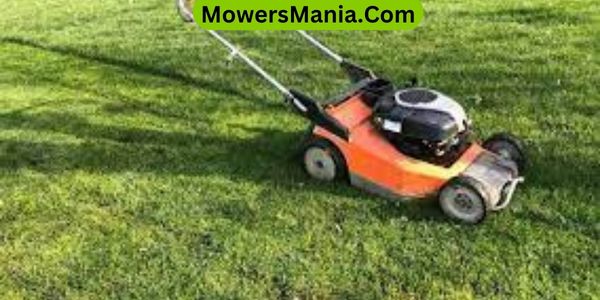Did you happen to notice that your mower suddenly started running slower?
It could be due to a few common reasons like a dirty air filter, worn drive belt, low oil level, or a clogged mower deck.
Another possibility is a faulty spark plug, or your mower’s blades might be dull or damaged.

These issues can impact the performance of your mower and cause it to slow down.
It’s important to address these potential causes to ensure your mower runs smoothly and effectively.
Dirty Air Filter
If your mower suddenly starts running slower, it may be due to a dirty air filter causing reduced airflow to the engine.
When the air filter becomes clogged with dirt, grass clippings, and other debris, it restricts the amount of air that can reach the engine. This leads to an imbalance in the air-fuel mixture, causing the engine to run less efficiently.
To address this issue, you should first locate the air filter housing on your mower. This is usually a plastic or metal box near the carburetor. Once you’ve found it, use a screwdriver to remove the cover and inspect the air filter.
If it’s covered in dirt and debris, it’s time for a replacement. You can purchase a new air filter at most hardware or home improvement stores.
Replacing the air filter is a simple and cost-effective solution that can significantly improve your mower’s performance.
By ensuring a steady flow of clean air to the engine, you’ll help maintain proper combustion and keep your mower running smoothly.
Regularly checking and replacing the air filter as needed will prolong the life of your mower and ensure optimal operation.
Worn Drive Belt
Inspect the drive belt for signs of wear and tear, as a worn drive belt can also cause your mower to run slower due to reduced power transfer to the cutting blades.
A worn drive belt can slip, causing a decrease in power transmission from the engine to the cutting blades.
This can result in slower blade rotation and reduced cutting efficiency. To determine if the drive belt is worn, visually inspect it for cracks, fraying, or any other signs of damage.
Additionally, check for proper tension in the belt and ensure it is not slipping on the pulleys. Refer to your mower’s manual for specific instructions on how to adjust or replace the drive belt.
| Signs of a Worn Drive Belt |
|---|
| – Visible cracks |
| – Fraying |
| – Glazing or shininess |
Regularly inspecting and replacing the drive belt as part of your mower’s maintenance routine can help prevent sudden decreases in performance.
By addressing a worn drive belt promptly, you can maintain the optimal power transfer from the engine to the cutting blades, ensuring consistent and efficient mowing performance.
Low Oil Level
You should regularly check the oil level in your mower’s engine, as low oil levels can cause your mower to suddenly start running slower, particularly if the oil is rarely changed or topped up.
Low oil level can lead to increased friction and heat in the engine, which in turn can result in decreased performance.
Here’s why low oil level can cause your mower to run slower:
- Friction increases as oil level decreases, causing the engine to work harder.
- Inadequate lubrication can lead to increased wear and tear on engine components.
- High operating temperatures due to low oil levels can cause the engine to lose power.
- Running a mower with low oil levels for an extended period can eventually lead to engine damage.
Regularly checking and topping up the oil in your mower’s engine is crucial for maintaining optimal performance and preventing potential damage. Always refer to your mower’s manual for the recommended oil type and change intervals to ensure proper maintenance.
Clogged Mower Deck

If your mower suddenly started running slower, a clogged mower deck could be the culprit. Clearing any grass buildup from the deck and checking the condition of the blades are essential first steps.
Additionally, inspecting the belt tension can also help restore your mower’s performance.
Clear Grass Buildup
To improve your mower’s speed, start by clearing the grass buildup from the clogged mower deck. Grass buildup can significantly impede the performance of your mower, causing it to run slower than usual.
Here’s what you can do to address this issue:
- Turn off the mower and disconnect the spark plug to ensure safety.
- Use a putty knife or a wire brush to remove the compacted grass from the underside of the mower deck.
- Check and clean the discharge chute to prevent further clogging.
- Regularly inspect and clean the mower deck after each use to avoid excessive grass buildup.
Check Blade Condition
After clearing the grass buildup from the clogged mower deck, it’s important to check the blade condition to ensure optimal performance.
Start by inspecting the blades for any signs of damage, such as bends, dents, or nicks. Even minor damage can significantly impact the mower’s efficiency.
Next, ensure the blades are sharp and not dull, as dull blades can tear the grass instead of cleanly cutting it, leading to an uneven and unhealthy lawn.
Additionally, make sure the blades are securely fastened and not loose, as this can cause uneven cutting and put strain on the mower’s engine.
Regularly inspecting and maintaining the blade condition is crucial for a properly functioning mower and a well-manicured lawn.
Inspect Belt Tension
You can check the belt tension in the clogged mower deck by carefully examining and adjusting it for optimal performance. A clogged mower deck can cause the belt tension to become loose, leading to slower mower operation.
Here’s how to inspect and adjust belt tension:
- Visually inspect the belt: Look for any signs of wear, cracks, or damage on the belt.
- Check for debris: Clear out any grass clippings, dirt, or debris that may be obstructing the belt or pulleys.
- Adjust the tension: Refer to your mower’s manual to find the correct tension specifications and adjust the tension accordingly.
- Ensure proper alignment: Make sure the belt is properly aligned on the pulleys to prevent any slipping or dragging.
Faulty Spark Plug
If your mower suddenly starts running slower, a faulty spark plug could be the culprit. A spark plug creates the spark necessary for combustion within the engine.
When it’s faulty, the spark may not be generated consistently or may be weaker, leading to inefficient fuel combustion and reduced engine performance.
To check if the spark plug is the issue, start by removing the spark plug wire and then the spark plug itself. Look for signs of wear, such as fouling, corrosion, or deposits, and replace the spark plug if necessary.
Ensure that the new spark plug is gapped correctly according to the manufacturer’s specifications before installing it.
Additionally, inspect the spark plug wire for any damage or wear and replace it if needed. Regularly maintaining and replacing spark plugs according to the manufacturer’s recommendations can prevent issues and keep your mower running smoothly.
If you’re unsure about the condition of your spark plug or how to replace it, consult a professional for assistance.
Dull or Damaged Blades

If your mower suddenly started running slower, one possible reason could be dull or damaged blades.
Dull blades can cause excessive friction, resulting in a decrease in cutting efficiency and overall speed.
Additionally, an imbalance in the blades can lead to unnecessary drag on the mower, affecting its performance.
Blade Sharpening Needed
When your mower suddenly starts running slower, it may be due to the need for blade sharpening. Dull or damaged blades can cause inefficiency in cutting grass.
Dull blades tear and shred the grass instead of making clean cuts, leading to an uneven lawn and putting extra strain on the mower’s engine. Damaged blades can also throw off the balance of the mower blades, causing vibrations and reducing cutting effectiveness.
Sharpening the blades is essential for maintaining a healthy lawn and ensuring that your mower runs at its optimal speed. Regular blade maintenance can prevent issues and prolong the life of your mower.
- Uneven lawn due to tearing and shredding of grass
- Increased strain on the mower’s engine
- Imbalance and vibrations caused by damaged blades
- Prolonged mower lifespan through regular blade maintenance
Imbalance Causing Drag
You may notice that your mower is running slower due to the imbalance caused by dull or damaged blades, which creates unnecessary drag and reduces cutting efficiency.
When the blades are not sharp or are damaged, they can become unbalanced, causing the mower to work harder to rotate them.
This imbalance not only slows down the mower but also puts additional strain on the engine and the belts, potentially leading to more serious issues.
To avoid this problem, it’s essential to regularly inspect and sharpen the blades, as well as replace any that are damaged.
Here’s a table to illustrate the impact of imbalance on mower performance:
| Condition | Mower Speed | Cutting Efficiency |
|---|---|---|
| Balanced Blades | Normal | High |
| Dull Blades | Slower | Reduced |
| Damaged Blades | Slower | Reduced |
Frequently Asked Questions [FAQs]
How Can I Prevent My Mower From Running Slower in the Future?
To prevent your mower from running slower in the future, regularly clean the air filter, sharpen the blades, and check the oil. Also, clean the underside of the deck and keep the tires properly inflated for optimal performance.
Can a Dirty Air Filter Affect the Overall Performance of My Mower in Other Ways?
Yes, a dirty air filter can affect your mower’s performance in various ways. It restricts airflow, causing the engine to run slower. Regularly cleaning or replacing the air filter can help maintain the mower’s overall performance.
Are There Any Signs or Symptoms I Should Look Out for That Indicate a Worn Drive Belt?
If your mower’s drive belt is worn, you may notice slipping, unusual noises, or a decrease in speed. Check for visible signs of wear and tear, and replace the drive belt if you observe any of these issues.
Is There a Way to Tell if My Mower’s Oil Level Is Low Without Physically Checking It?
You can check your mower’s oil level without physically checking it by using the dipstick. Pull it out, wipe it clean, reinsert it, and then pull it out again to see where the oil level is.
What Kind of Maintenance Should I Be Doing to Avoid a Clogged Mower Deck in the Future?
To avoid a clogged mower deck, regularly clean it after mowing. Keep the underside free of grass clippings and debris. Also, check and replace the mower blades as needed, and ensure the deck is properly leveled for more efficient cutting.
Conclusion
So, if your mower suddenly starts running slower, it could be due to a dirty air filter, worn drive belt, low oil level, clogged mower deck, faulty spark plug, or dull/damaged blades.
Make sure to regularly maintain and inspect these parts to keep your mower running smoothly and efficiently.
If the issue persists, it may be best to consult a professional for further assistance.



